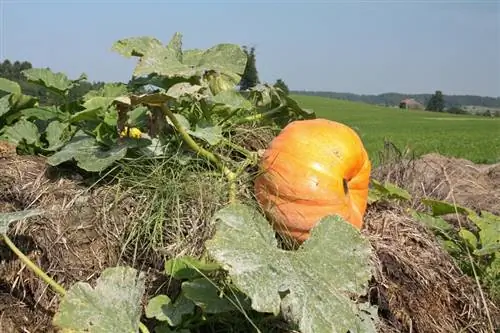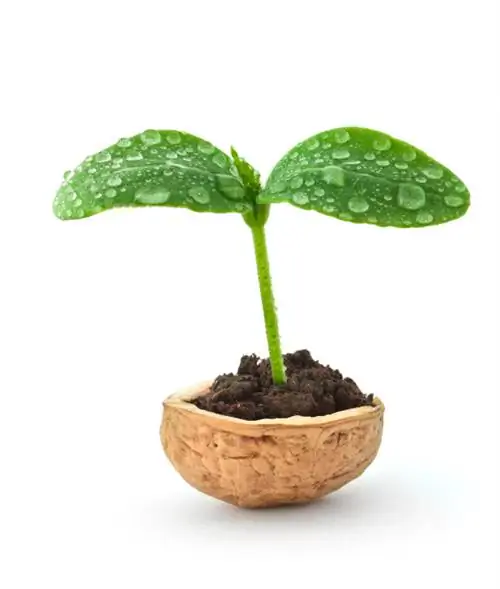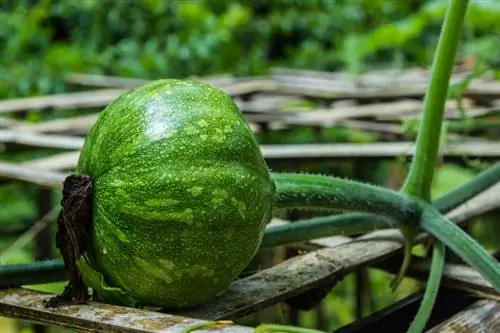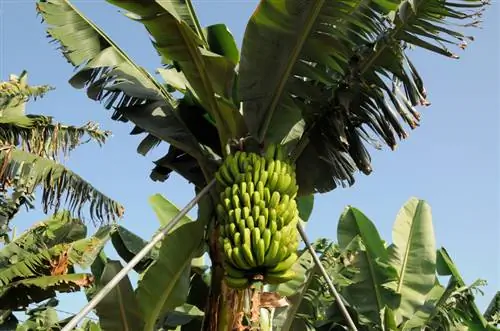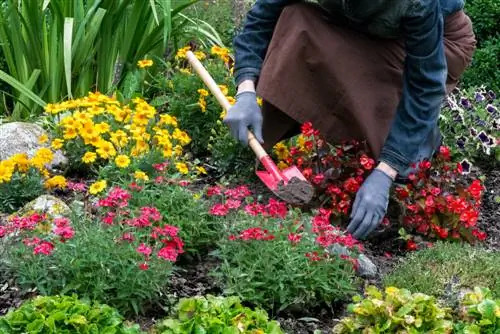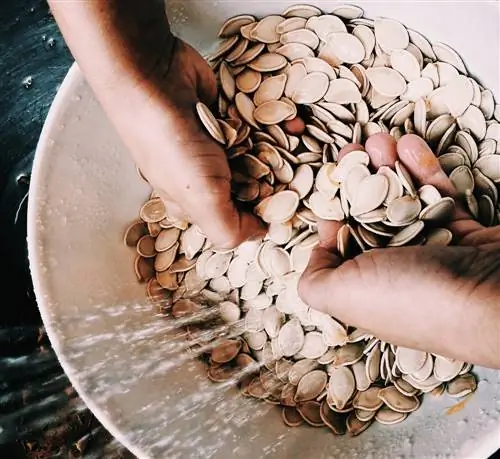- Author admin [email protected].
- Public 2023-12-16 16:46.
- Last modified 2025-01-23 11:19.
The successful cultivation of pumpkin rests on three pillars: sun, water and nutrients. The location and watering can stabilize the first two foundations. Below we will tell you how to satisfy the hunger of heavy eaters.
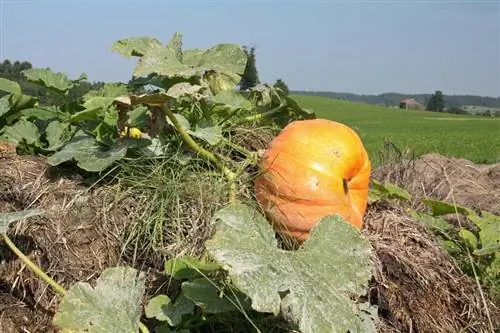
How should you properly fertilize pumpkins?
For successful pumpkin fertilizing, we recommend organic fertilizer such as compost, plant manure, guano, horn shavings or manure. When planting, the substrate should be enriched with compost and fertilized regularly over the course of the growth and flowering period.
There are no chemicals on my pumpkin
The vast majority of environmentally and he alth-conscious hobby gardeners act according to this principle. Fertilizers from the chemical witch's kitchen are absolutely not necessary if you know the secret to first-class pumpkin growth: compost.
Compost is the undisputed star among organic fertilizers in the home garden. When created correctly, well-rotted garden compost provides a concentrated load of valuable plant food. Other organic fertilizers serve as a useful supplement:
- Plant manure, especially nettles and comfrey
- Guano, the nitrogen-containing excrement of seabirds
- Horn shavings/horn meal, crushed hooves and horns
- Stable manure, especially from horses and cows
- Organic complete fertilizer from organic retailers
Fertilize regularly for a complete supply of nutrients
The start of the pumpkin season in May is considered the starting signal for the administration of fertilizer. When planting in a bed or container, add a generous dose of sifted compost to the substrate. You can optionally add horn shavings (€52.00 at Amazon), horn meal or guano.
During the growth and flowering period, add between 3 and 5 liters of compost per square meter every 2 weeks. Ideally, the natural fertilizer is so mature that its composition is reminiscent of fragrant forest soil.
In addition, spray the compost layer with nettle manure because it is particularly rich in nitrogen. A thin layer of grass clippings prevents the material from drying out prematurely.
Plant in the middle of the nutrient source
A common location for pumpkin plants is just as ingenious as it is simple: the compost heap. In this way, knowledgeable hobby gardeners plant their pumpkin directly at the source of food. Every now and then add guano, horn shavings or manure as well as a good sip of nettle manure.
Tips & Tricks
If you fertilize your pumpkin according to our instructions, it will grow rapidly. It is not uncommon for it to reach the size of a basketball within 7 days of pollination. Now at the latest, place the gem on a Styrofoam plate or another surface so that it doesn't rot.

